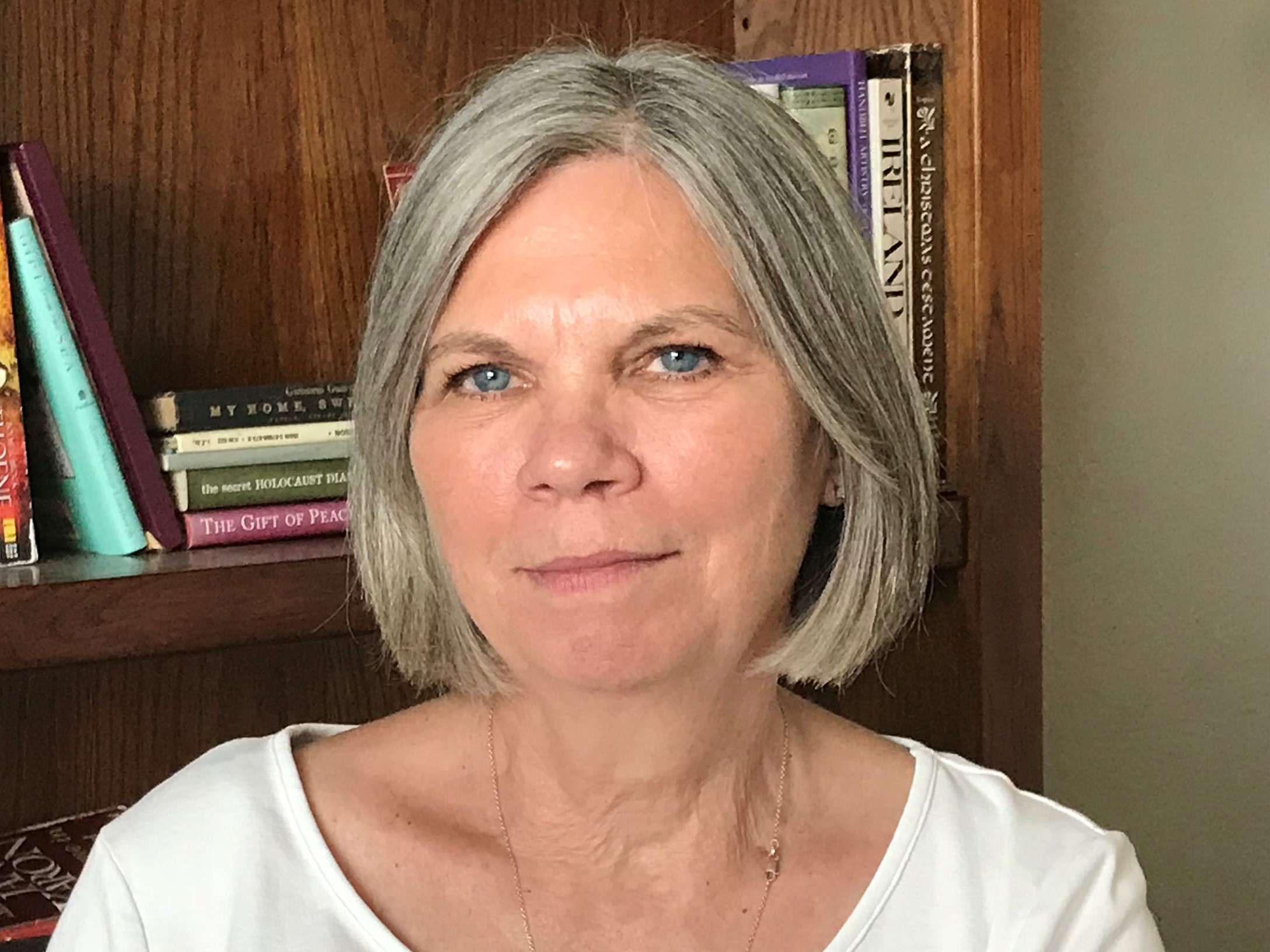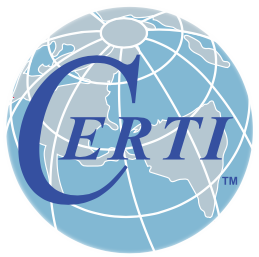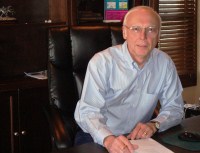| Douglas Kladder – Director – Doug directly oversees the content and quality of its educational programs. Doug has an extensive history of radon issues dating back to the mid-1980s. This experience is incorporated into CERTI’s programs to make them both relevant and meaningful for the student and client. | |
 |
Denise Brown – Vice President – Denise has been with CERTI since 2001, and brings a varied background experience in law, management, training, and organization. |
 |
Kelly Brown – Operations Manager – Kelly recently joined CERTI in 2018. Kelly has vast experience in office management, project management and statistical analysis. |
About CERTI
The following synopsis provides an indication of the large breadth of experience and areas in which curriculum can be developed to best fit a clients needs.
1985-1989
Prior to the formalization of EPA training efforts through the formation of Regional Radon Training Centers in 1989. Mr. Kladder and associates were pioneers in the development of radon mitigation techniques in the western US. As early as 1985, CERTI principals were conducting radon measurements on behalf of homebuyers and relocation companies in Colorado. As part of their innovative spirit, they began applying themselves to developing methods for radon reduction that were both cost-effective and durable. The success of these efforts soon identified them as national leaders in radon mitigation techniques, that in-turn, led to them being called upon to assist in EPA research projects and the development of several EPA protocols and standards that formed a portion of the structure leading up to the initiation of EPA’s National Radon Proficiency Program. This included:
- Writing of the initial draft of the US EPA Radon Mitigation Standards (1989)
- Participation in EPA workshops for the development of minimum educational requirements for measurement and mitigation professionals seeking EPA listing status (rubrics)
- Participation in National Exam Question Development (1988-89)
- EPA Train-the-Trainer Program (1989)
1989-1995
As part of the Radon Abatement Act the US EPA designated three regional radon training centers to provide the educational basis of its National Radon Proficiency Program, with a prerequisite that a portion of its instructors had field experience in the area of radon. The Western Regional Radon Training Center was located at Colorado State University, where Mr. Kladder held the position of Lead Instructor, responsible for not only fulfilling the field experience requirement but also fulfilled the position of developing courses and curriculum on behalf of CSU. During this period, many new and innovative programs were developed under his direction:
- Radon Measurement Operator and Radon Technology for Mitigators courses, including a revision of course delivery curriculum utilized by CSU and other EPA designated training centers
- Radon and the Real Estate Professional, a four-hour course for continuing education credits for real estate professionals
- Radon Resistant New Construction, a course designed for new home builders that has continued to be updated and is a large portion of the current US EPA guidance document: Building Radon Out.
- Rewrite of Reducing Radon in Structures, a core text for entry-level radon measurement and mitigation courses that is continued to be used to this day.
- Radon Response Plans in Schools, a concise program for school personnel to conduct measurements and more importantly to develop planned approaches to addressing identified concerns.
- Radon Measurement and Mitigation Approaches for the US Postal Service, a combination of the entry-level Radon Measurement Course, the Radon Response Plan program and a customized module providing District Environmental Coordinators specific guidance on the QA/QC plan for their nationwide survey effort.
- Pilot programs for the US Military installations in the Pacific Rim, demonstrating mitigation techniques for unique housing stock.
- Oversight of radon survey of residences, schools and administrative buildings on the Island of Guam (Guam EPA) that led to the identification of unique, karst based entry phenomena and the development of specialized training curriculum for radon professionals in tropical regions.
- Radon and Weatherization, a specialized a radon mitigation educational program that enabled several local weatherization agencies (New Mexico, Colorado, Wyoming, Tribal Organizations) to provide cost-effective radon reduction programs to low-income families.
- Protecting Your Home From Radon, a do-it-yourself manual for homeowners wanting to mitigate their own home or become informed consumers has become a widely used reference book for consumers and can be found in most libraries throughout the US. It continues to be a resource for homeowners as well as professionals in the industry. It is now in its second edition and 11th printing.
- CERTI principals were intimately involved in the third and most recent edition of the US EPA’s Radon Reduction Techniques for Existing Detached Houses (1993).
1995-1998
In 1995, Colorado State University and US EPA Region VIII recognized the economies of relocating the EPA’s designated training center to Colorado Springs, where Mr. Kladder and CSU’s contract instructor, Dr. James Burkhart resided. As a result, a training center was established at the University of Colorado at Colorado Springs in an arrangement where Mr. Kladder functioned both in a continued curriculum development role, but also as the program administrator. This arrangement continued until May 2004 where several of the programs developed under Colorado State’s tenure could be continued in addition to new innovative programs in education and public outreach as follows:
- Development of the Train-the-Speaker Program that serves to assist radon professional and public health personnel in delivering public presentations on radon. Graduates of this program continue to be recognized as public resources in the NEHA-National Radon Proficiency Program.
- Radon Detector Placement & Retrieval Workshops, A concise four-hour program was needed for the proper placement and retrieval of specific devices by tribal organizations. First piloted for the Inter-Tribal Council of Arizona, this course has become very popular with many tribal organizations that do not need the complete information supplied in an all encompassing entry-level course, but a more in-depth review of their survey workplan and details of the use of the measurement devices they have selected.
- Radon in Private and Public Water Supplies, developed as means to educate employees of public water supplies and local environmental health professionals and all aspects of the requirements and implications of the radon rule in the reauthorization of the Safe Drinking Water Act. Developed in conjunction with Dr. J. Lowery and Dr. J. Burkhart.
- Community Enabling Programs, a series of four-hour do-it-yourself courses, based on the book Protecting Your Home From Radon delivered throughout the Western US in conjunction with state health departments and local building supply stores.
1998-2002
CERTI principals also assumed the administrative role for initiating the National Radon Proficiency Program on behalf of the National Environmental Health Association. Administering the NEHA-NRPP from 1998 to 2002, provided a unique insight into the elements of the radon certification program that is transferred into CERT’s post-course assistance to its students as they step through the certification process. In addition to these tasks, CERTI personnel expanded the breadth of their educational offerings as follows:
NEHA-NRPP Speakers Bureau, a listing of individuals posted on the NEHA-NRPP website that are able and willing to deliver short public information programs to the general public.
Dealing with Radon in Real Estate Transactions, was CERT’s first foray into making educational videos. This 20 minute video, first produced for the State of Colorado has been immensely helpful in calming anxious buyers confronted with elevated radon in homes they are purchasing. First produced for the State of Colorado, it has been adapted for Idaho with additional adaptations planned for 2005.
Protecting Your New Home From Radon, a short video for home builders explaining not only how easy RRNC is,, but also why it is of benefit to them. This video was produced under a grant from CRCPD for the State of Colorado with the assistance of local builders and real estate professionals.
Point of Sale Brochure, developed for Colorado, Idaho and Arizona that provides a positive message to home buyers that radon is a fixable problem. Developed in conjunction with Real estate Associations, this document has been very well received by the real estate industry as a concise document that advises homebuyers that testing and mitigation should be done, but not in a manner that jeopardizes the sale.
Formation of a joint venture with the National Environmental Health Association NEHA-CERT to develop and deliver public outreach programs for radon, as well as other educational programs for environmental health professionals.
The addition of CERT Trainers as a means to increase the local delivery of classroom courses and enhancing the inclusion of locally relevant information.
2004 – Present
As of May 31, 2004, the parent organization of CERT (CVC) opted not to renew its contract as administrators for radon training efforts at the University of Colorado at Colorado Springs (UCCS) in order to allow it to expand the scope of its course offerings and modernize its delivery methods. We are proud to have played such a significant role in the birth of the WRRTC at Colorado State University and EPA’s transfer of it to the University of Colorado in 1995.
Similar to EPA’s privatization of the radon proficiency program, the conditions are such that a greater privatization of educational efforts is appropriate. CERTI is responding to these conditions and the need to improve the quality and accessibility of its course offerings to its students, its clients and ultimately to the public.



